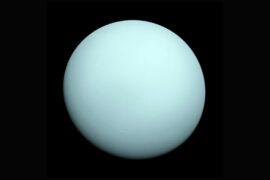Saturn has always been a very interesting planet. Not just because of its beautiful and prominent sets of rings, but because it has many other unique characteristics that make it very interesting to us.
For example, Saturn is the farthest planet that is visible from Earth without the help of a telescope. This means that even ancient civilizations knew about it and studied it.
But one of the most common questions about Saturn is about its temperature. Because Saturn shares its elemental composition with a star, many people wonder if it is some kind of small star, and therefore if it is hot or cold.
In this article, we’ll answer that question and tell you why it can be tricky to answer.
What factors determine Saturn’s temperature?
The temperature of a planet is determined by a few key characteristics. These include how far away it is from the Sun, its composition, the density of its atmosphere, and how much light it reflects.
So let’s take a look at those factors for the specific case of Saturn.
Distance from the Sun
Saturn is the sixth planet in the Solar system, It is the first planet that is more than one billion kilometers away from the Sun. To be more exact, it is 1.46 billion kilometers away, or 900,000 miles.
For comparison, Saturn is almost 10 times farther away from the Sun than Earth.
This means that Saturn gets very little sunlight. From that, you could conclude that Saturn is quite cold. And you would be mostly right, however, there is one more thing to consider.
Composition
Saturn is a gas giant. As the name implies, it means it is mostly made out of gas. More specifically, it is made out of hydrogen and helium. What other objects in the universe are made out of hydrogen and helium? stars!
This obviously does not mean that Saturn is a star. It is way too small for that despite being a gas-giant planet. It can’t even be considered a failed star. However, it is natural to wonder if this has any effect on the planet’s temperature.
The answer is no, for the most part, none of the hydrogen in Saturn is being fusioned like in a star and there the planet is not emitting energy. However, one thing that does affect Saturn’s temperature is that a lot of the gas is forming clouds. These clouds in turn form thick layers that can trap heat in the inner layers of the planets.
With that in mind, we can now answer the original question.
Is Saturn hot or cold?
The short answer is that Saturn is cold. But the long answer is that it is both hot and cold at the same time. The atmosphere and outer layers of Saturn are very cold. The average temperature in this area is -140°C (-284°F).
However, the temperature in Saturn increases rapidly as you go down in its layers because a lot of the heat is trapped. The temperatures near Saturn’s core are estimated to be around 11,000°C (20,000°F).
So, in a way, you could say that Saturn is both cold and hot at the same time. Cool, isn’t it?
Is Saturn hotter or colder than Earth
Now that we know the temperatures of Saturn, we can compare it to Earth.
Saturn in general is colder than Earth because it is so far away from the Sun that it gets very little sunlight. The lowest temperature recorded on Earth’s surface is -89.2°C (-128.6°F), on Antarctica. That is not even close to the average -140°C (-284°F) of Saturn’s outer layer. Remember that Saturn is a gas planet, so the comparison isn’t 1 to 1 as it doesn’t have a surface, but that would be the most fair comparison.
The average temperature on Earth’s surface is much warmer at 14°C (57°F) which is the kind of temperature that we humans can live in.
As for Earth’s core, it is estimated that the temperature there is about 5,200°C (9,392°F). That is much less than Saturn’s 11,000°C (20,000°F). This is due to Earth’s rocky surface and mantle.
So, in a weird way, you could say that Earth is both hotter and colder than Saturn, depending on which layer of the planets you are talking about.
Summary
- Saturn is 10 times farther away from the Sun than Earth. As a result, it receives little sunlight and is generally cold.
- The mean temperature in Saturn is -140°C (-284°F) in its outer layer and atmosphere.
- Jupiter’s core and inner layers are much hotter and can reach temperatures of 11,000°C (20,000°F).
Enjoyed this article?
Get daily 10-minute PDFs about astronomy to read before bed!
Sign up for our upcoming micro-learning service where you will learn something new about space and beyond every day while winding down.







